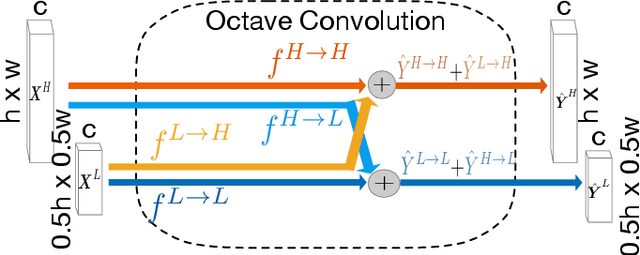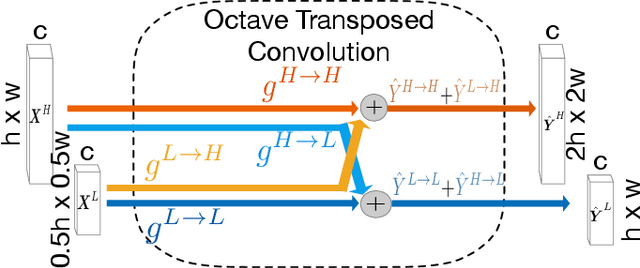Benzhang Qiu
Accurate Retinal Vessel Segmentation via Octave Convolution Neural Network
Aug 11, 2019



Abstract:Retinal vessel segmentation is a crucial step in diagnosing and screening various diseases, including diabetes, ophthalmologic diseases, and cardiovascular diseases. In this paper, we propose an effective and efficient method for vessel segmentation in color fundus images using encoder-decoder based octave convolution network. Compared with other convolution networks utilizing vanilla convolution for feature extraction, the proposed method adopts octave convolution for learning multiple-spatial-frequency features, thus can better capture retinal vasculatures with varying sizes and shapes. It is demonstrated that the feature maps of low-frequency kernels respond mainly to the major vascular tree, whereas the high-frequency feature maps can better capture the fine details of thin vessels. To provide the network the capability of learning how to decode multifrequency features, we extend octave convolution and propose a new operation named octave transposed convolution. A novel architecture of convolutional neural network is proposed based on the encoder-decoder architecture of UNet, which can generate high resolution vessel segmentation in one single forward feeding. The proposed method is evaluated on four publicly available datasets, including DRIVE, STARE, CHASE_DB1, and HRF. Extensive experimental results demonstrate that the proposed approach achieves better or comparable performance to the state-of-the-art methods with fast processing speed.
Automated Steel Bar Counting and Center Localization with Convolutional Neural Networks
Jun 03, 2019



Abstract:Automated steel bar counting and center localization plays an important role in the factory automation of steel bars. Traditional methods only focus on steel bar counting and their performances are often limited by complex industrial environments. Convolutional neural network (CNN), which has great capability to deal with complex tasks in challenging environments, is applied in this work. A framework called CNN-DC is proposed to achieve automated steel bar counting and center localization simultaneously. The proposed framework CNN-DC first detects the candidate center points with a deep CNN. Then an effective clustering algorithm named as Distance Clustering(DC) is proposed to cluster the candidate center points and locate the true centers of steel bars. The proposed CNN-DC can achieve 99.26% accuracy for steel bar counting and 4.1% center offset for center localization on the established steel bar dataset, which demonstrates that the proposed CNN-DC can perform well on automated steel bar counting and center localization. Code is made publicly available at: https://github.com/BenzhangQiu/Steel-bar-Detection.
 Add to Chrome
Add to Chrome Add to Firefox
Add to Firefox Add to Edge
Add to Edge